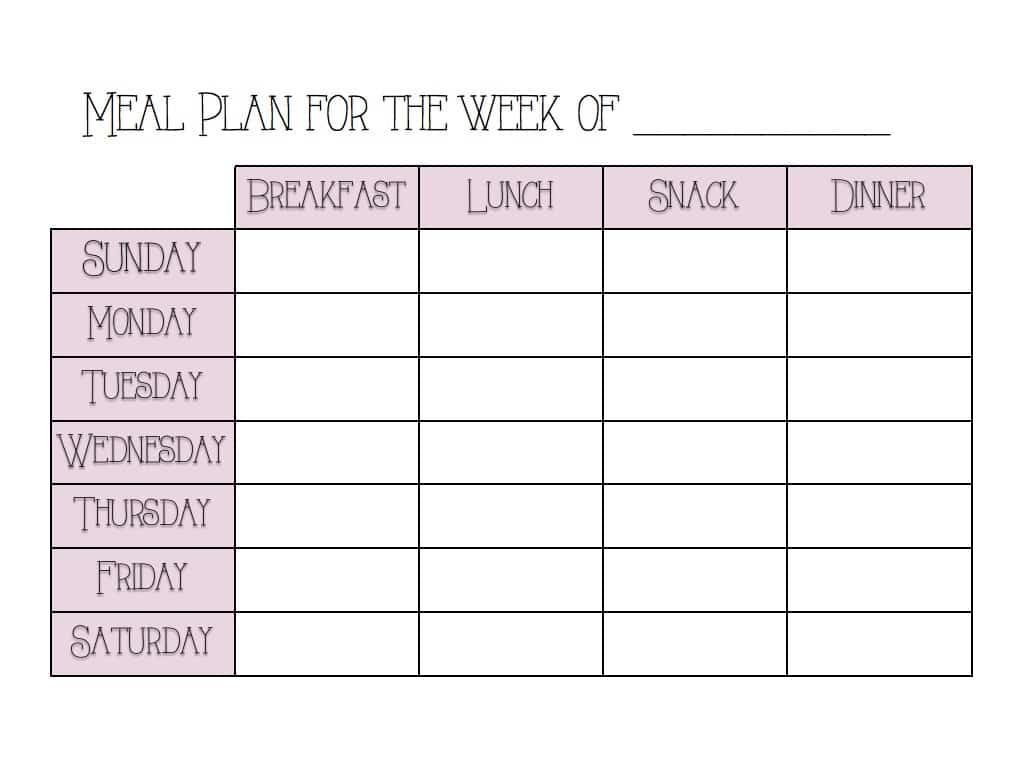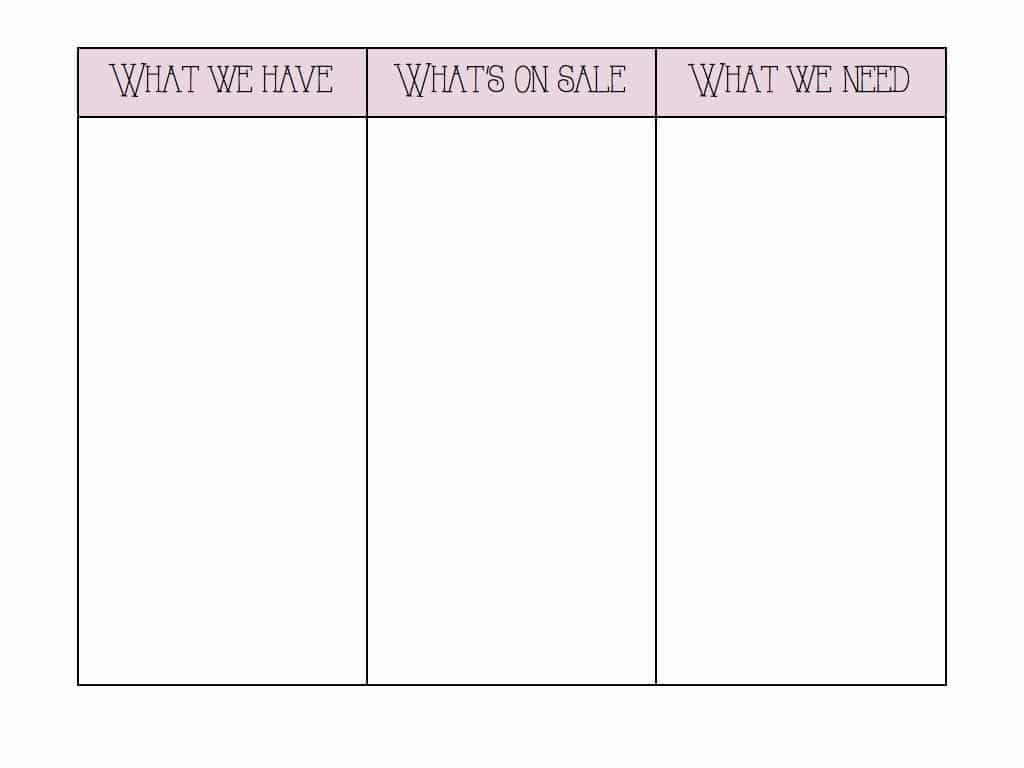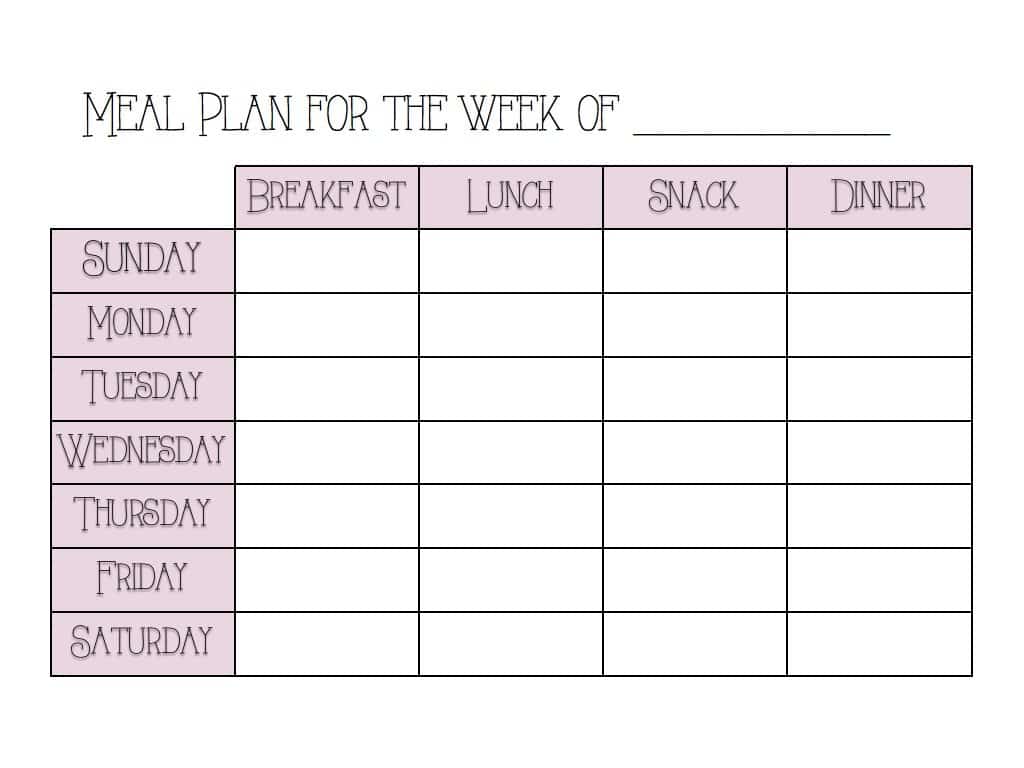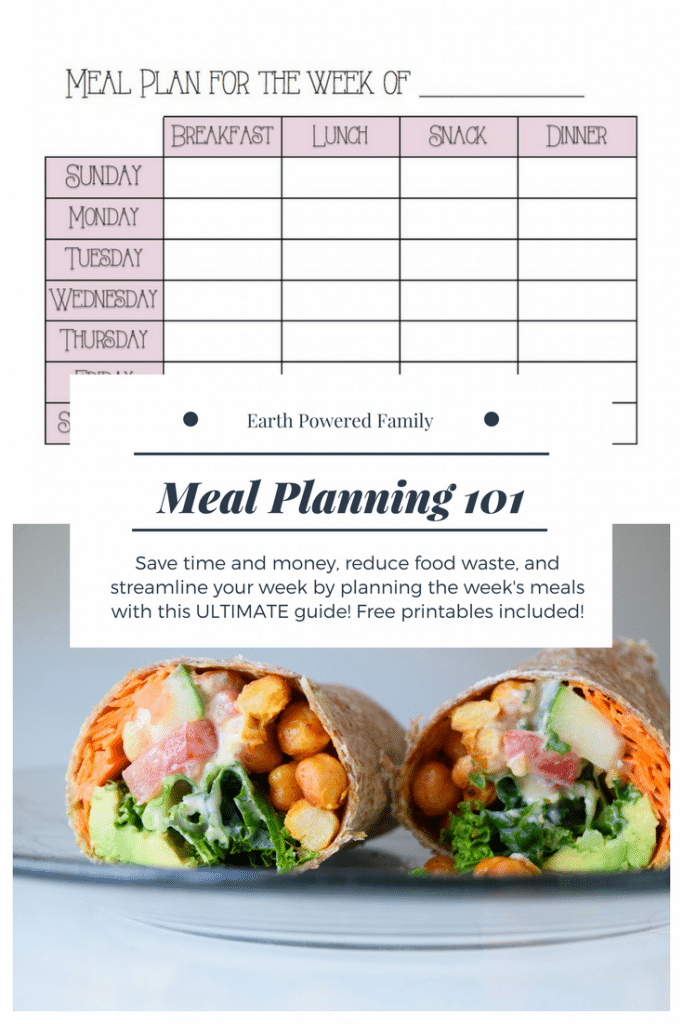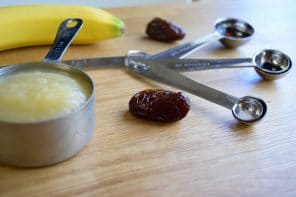Whether you’ve got a super busy life and need some streamlining or you want to save some money, meal planning can go a long way to help. It doesn’t have to be set into stone, there are plenty of weeks where we’ve completely changed the plan halfway through. But having some kind of plan around major meals is such a tremendous help, plus it reduces food waste!
The biggest obstacles in meal planning are figuring out how to do it and coming up with meals. But it doesn’t have to be all that difficult or time consuming. Here is my handy guide to meal planning.
Before you sit down and plan out your meals, you’re going to need to do a bit of prep work. Start with these tips:
- Save receipts. Before you start planning, it can be super helpful to have a few things at your fingertips, receipts from past grocery store runs are one of these. Especially if you are budgeting, it can be helpful to have the prices of items that you frequently buy so you aren’t guessing. It’s also nice to have a general idea of how many pounds or ounces of a fruit or vegetable you typically buy so that you can know how much you will be spending on it. The weight of the item is usually listed right on the receipt.
- Have a “master list” of meals. A master list of favorite meals is an absolutely essential part of making meal planning easier. It’s basically a list or recipe binder of meals that you have tried and know that they are delicious and easy to fit into your week. You can always sift through Pinterest or cookbooks for new recipes to try, but having a list of sure favorites means that all you have to do is plug the meals into the days that you want. You can “pin” these meals into their own category on Pinterest, have copies in a binder, make a file on your phone or computer, or just have a list stuck to your fridge. No more spending hours wondering what to make because you already have meals that you know are tasty and work for your family.
- Plan meals around your schedule. Take a look at your week’s schedule. Take into account how long you will be home, how busy you will be that day, and even how much prep and cooking you will want to do on a particular day. If you have a sport to take a child to around dinner time, chances are that you will not want to plan a dinner that will take hours to prep and cook. The same idea goes for other meals, like breakfast and lunch. Busy mornings call for easy breakfasts and lunches should be planned according to whether you will be home, near a microwave, or out and about. It’s super helpful to make a note of how long a recipe actually takes on your master list of meals.
- Use what you have. Make a list of items in your pantry, fridge, and freezer. This is a great way to make sure that you are using up groceries from the following week to prevent food waste, plus I like to use it as inspiration for the following week’s meals. Write out all the items as well as their quantities (if you need more than you have for a recipe, it’s helpful to know this ahead of time) on a piece of paper. Then, draw stars next to the items that need to be used first, such as vegetables that will go bad or freezer items that are nearing their expiration date. I love to have a running list to keep track of pantry, fridge, and freezer items.
- Check ads and coupons. Track down the ads for the grocery stores that you are planning on going to. Now, make a list of items that you might use, as well as their prices. Most stores will send flyers in the mail, but they are also usually listed on their website. This can help keep your grocery bill down as well as serve as a bit of inspiration.
Now that you have everything prepped, it’s time to plan your meals! I’ve included the guide that I use HERE: Meal Planning 101!
- Plug in the dinners. Using your lists of favorite meals, what you already have, and what’s on sale, choose recipes that fit. Don’t forget to consider that week’s schedule! My absolute favorite way to plug in dinners is to assign a “theme” to each day. The theme can be a cuisine such as Italian, Indian, and Mexican. Or it can be the type of food or even the cooking process. This how we plan:
- Sunday = Casserole
- Monday = Stovetop dinner (stir fry, sauteed vegetables, etc.)
- Tuesday = Round food (pot pies, pizza, tortilla based meals, etc.)
- Wednesday = Buddha Bowls
- Thursday = Soups, stews, and sandwiches
- Friday = Spaghetti
- Saturday = Wild Card! (breakfast for dinner, a new recipe, take out, etc.)
- Plan out breakfast. I like to have just one or two breakfasts planned for the whole week. Especially because breakfast relies on habit, it’s super helpful to just streamline the process. For example, I like to have overnight oats most mornings, so I know that I need to prepare this the night before every night that week. When it’s already into a routine, it’s more likely to actually happen.
- Take care of lunch. What you plan for lunch will depend on your life. As a stay at home mom, lunches for me are usually leftovers or an easy sandwich. My husband likes to plan out what he brings to work with him, including snacks, desserts, and sometimes a side. Also, children’s lunches will need to be planned out if you pack them. If you like to include leftovers for lunches, it’s helpful to make a note of meals that you know will yield leftovers and meals that won’t. For this reason, I keep a loaf of bread in the freezer so that I can make a sandwich if there aren’t enough leftovers.
- Consider your snacks. I cannot get through the day without snacks. Plus, with a three year old, healthy snacks on hand are a necessity. I like to plan a main snack for everyday, such as vegetables and hummus or apples and peanut butter. Then, I make a list of other healthy “backup” snacks that I like to keep on hand, such as granola, trail mix, crackers, and fruit. This helps tremendously in keeping up with healthy eating habits and prevents impulse snack purchases.
- Be a master list maker. The way that you make your grocery list can also help. Organize your list by which store the ingredient comes from first. Then, organize it by where it is in the store, either by grouping the items together or using color coded highlighters. You can also add prices, that way you can compare prices if you go to multiple stores or see alternative ingredients.
- Have a backup plan. Always have a backup plan. If you know that a day or two in your week is going to be busy, make a note on what takeout food you will get if you can’t cook. Or, if you aren’t sure if your grocery store carries a particular ingredient, plan a backup meal. I also like to have easy meals on hand such as spaghetti and a jar of sauce in case there’s a day I just really don’t want to cook or dinner plans fall through.
And there you have it! My handy guide to planning meals. Don’t forget the free, printable guide (check it out here: Meal Planning 101)!

